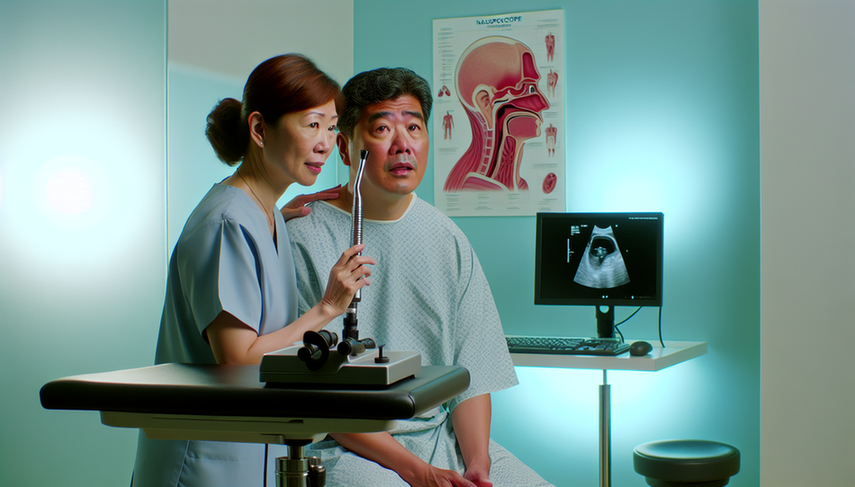Nasopharyngeal Cancer: Recognizing Early Signs, Nasal Obstruction, and the Importance of Timely Nasofibroscopy

Nasopharyngeal cancer (NPC) is a malignant neoplasm that, while rare in Europe and North America, is more common in regions such as southern China and Southeast Asia. Early detection is crucial for improving prognosis, as treatment in advanced stages presents significant challenges. However, the early signs of NPC can be nonspecific, complicating its early diagnosis. Among these signs are nasal obstruction, epistaxis, and otalgia, symptoms that are often confused with other less serious conditions.
Nasofibroscopy emerges as an essential tool for the early detection of NPC. This procedure allows for direct visualization of the nasopharynx, facilitating the identification of suspicious lesions that may not be evident in routine clinical examinations. The importance of nasofibroscopy is underscored by studies demonstrating its efficacy in detecting malignant lesions at early stages, which is crucial for successful treatment [1].
Furthermore, the combination of advanced techniques such as the detection of Epstein-Barr virus (EBV) DNA in plasma and nasofibroscopy has shown to improve specificity and positive predictive value in the detection of NPC [2]. Implementing these detection strategies in high-risk populations could significantly enhance clinical outcomes.
In conclusion, identifying early signs that are nonspecific and performing an early nasofibroscopy are fundamental steps in the management of nasopharyngeal cancer. The integration of advanced technologies and non-invasive detection methods can optimize early diagnosis and, consequently, the treatment of this disease. Continuous education and awareness regarding the importance of these procedures are essential for improving patient survival and quality of life.
Referencias
- [1] The role of nasopharyngeal examination and biopsy in the diagnosis of malignant diseases.
- [2] Detecting plasma Epstein-Barr virus DNA to diagnose postradiation nasopharyngeal skull base lesions in nasopharyngeal carcinoma patients: a prospective study.
Created 13/1/2025
